Gardening on a budget doesn’t have to be limiting or discouraging. There are lots of ways to keep the cost down, so it’s not so expensive. In this post, I’ll give you tons of cheap and free DIY gardening ideas that anyone can do.
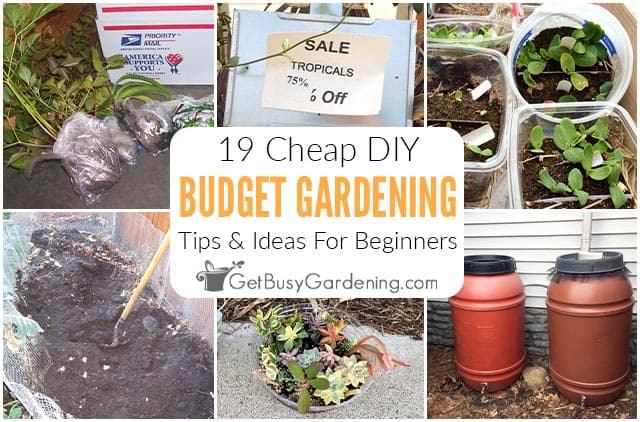
If you’re not careful, gardening can quickly become an expensive hobby. But, it doesn’t have to be. There are tons of ways to garden on a budget and still have beautiful and bountiful beds.
Trust me, I know this first hand. When I started gardening on my own, I was a broke college student. I had to get creative, which means I spent a lot of time finding ways to garden on a dime.
Over the years, I’ve become a pro at doing it on the cheap. And now, I’m sharing all of my secrets with you.
So, if you want to start gardening, but have a limited budget, then you’ll find tons of great ideas on this list!
Tips For Gardening On A Budget
The good news is that there are tons of easy ways to garden on a budget. Here’s a list of a few of my favorite ways to pinch pennies.
1. Grow From Seeds
You can stretch your gardening budget much farther when you grow your own vegetables, annuals, and perennials from seed.
If you’re a beginner look for ones that are easy to start from seeds. Many can be planted directly in the ground so you won’t need to buy any expensive equipment.
2. Find Used (Or Free) Tools & Equipment
Don’t buy your tools and equipment brand new, getting them used will save you tons of cash.
It’s easy to find used tools for pennies on the dollar, or even free, at garage and yard sales, or online marketplaces.
Also, ask your friends and neighbors to see if they have anything you can borrow. Heck, they may even have stuff collecting dust in the garage that they would be happy to get rid of.
Related Post: 21+ Essential Tools That Every Gardener Needs
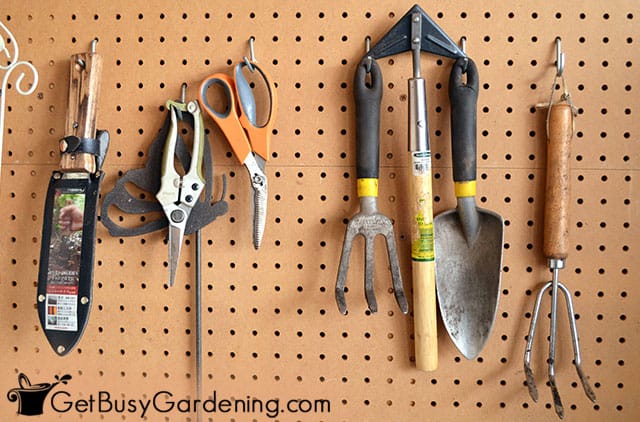
3. Collect & Save Seeds
Every budget-wise gardener should definitely learn how to collect seeds. There are tons of different types of perennials, annuals, and even veggie seeds that you can gather for free from your own garden.
This way, you won’t have to spend money to purchase any new ones, and you can build up a nice variety to regrow year after year.
Also, make sure to keep the extras of any that you’ve purchased. Seed packets usually come with more than you need. As long as you store them properly, you can keep most of them for several years.
4. Participate In Seed Swaps
The fastest way to build up a large stash of garden seeds when you’re on a budget is to trade for them. If you participate in local swaps, or organize a trade with friends, then you won’t have to spend any cash.
Otherwise, there are entire websites, forums, and social media groups dedicated to trading seeds online for merely the price of postage.
Sometimes you can find people who are generous enough to give them to you, even if you don’t have any to trade. Then once you build up a nice stash, you can pay it forward.
If you are just starting out, and don’t have any to trade, find a friend or two and go shopping together. You can pool your money to buy a larger variety, then divvy them up.
5. Repurpose & Upcycle
There are tons of ways to save money on your garden by upcycling items you already have or can easily find for free.
The possibilities are only limited by your imagination. Here are a few of my favorite thrifty ideas..
- Repurpose lumber or bricks to use for edging your garden beds.
- Raid your recycling bin, and use clear plastic food containers to start seeds.
- Build trellises out of scrap wood or metal.
- Make DIY plant markers out of old vinyl mini blinds.
- Get creative by making your own garden art out of repurposed junk.
- Hang an old mirror or chandelier to add a touch of shabby chic to your garden.
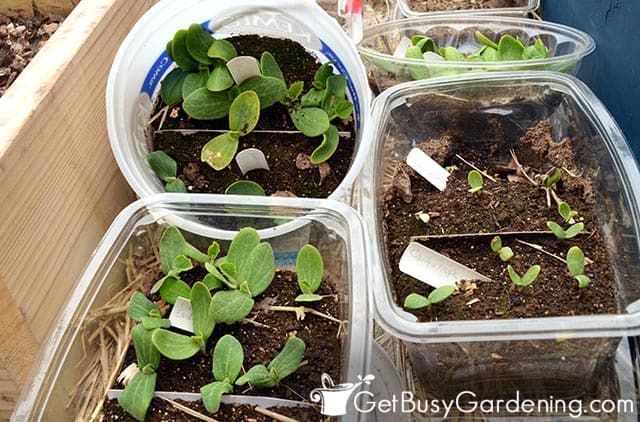
6. Don’t Throw It, Grow It!
Many discarded kitchen scraps can be used to grow new plants by saving the seeds or root stalks, even from grocery store produce.
This is very easy to do with vegetables like peppers, potatoes, garlic, onions, lettuce, celery, and carrots.
7. Take Cuttings & Divisions
Rather than buying plants, take cuttings and divisions of the ones you already have. This is called plant propagation, and it’s a gardening technique that anyone on a budget should learn.
It’s by far the most cost effective way to create new beds, expand existing ones, or even to fill your summer containers. There are tons of plants that are super easy to propagate, and you won’t have to spend a dime.
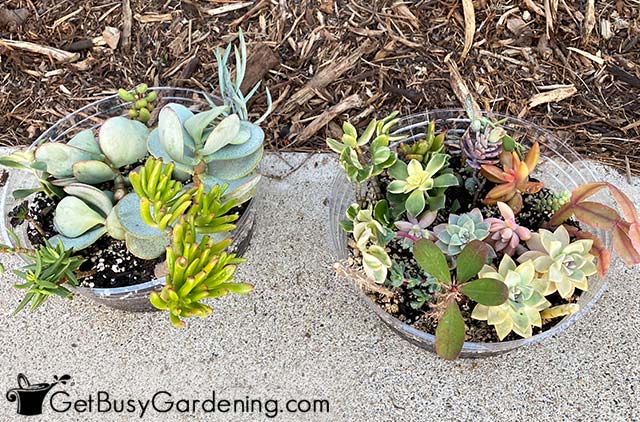
8. Look For Free & Inexpensive Plants
Seasoned gardeners always have a surplus of plants they are eager to give away. Oftentimes, you can find inexpensive options at Farmers Markets or in online marketplaces.
Look for sales around the neighborhood or your local community. Sometimes schools and universities will host them too.
Also, ask your friends and neighbors to see if they have anything they would be willing to divide and share with you. Once you build up your garden, you’ll be able to return the favor.
9. Buy Small Starter Plants
Rather than buying large, established perennials, purchase plugs instead. You can usually get a whole flat of smaller plugs for much less than it would be for one or two mature plants.
That means you can fill an entire garden bed for a fraction of the price, and stay within your budget. Yes, it will take a bit longer for them to fill in, but the cost savings will be worth the wait.
10. Wait For Plants To Go On Sale
New plants are the most expensive in the spring because everyone is eager to get their garden going.
So wait until after the initial rush to buy them. I know it’s hard not to get caught up in the excitement after the long, cold winter, but you won’t have to wait too long.
Oftentimes, garden centers will put them on sale as soon as the heat of summer kicks in. Fall is also a great time to find them at deep discounts.
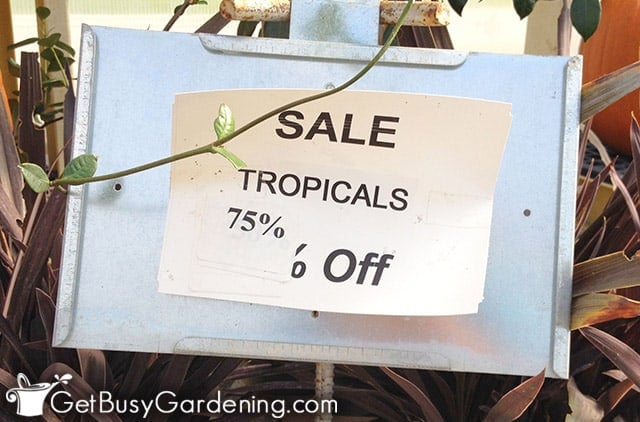
11. Shop End-Of-Season Sales
Just like anything else, gardening tools and equipment are usually cheaper to buy at the end of the season.
During late summer and early fall, stores are trying to clear space to make room for the next season of goods.
This is the best time to shop for cheap tools, gloves, pots, supplies, equipment, and even plants.
12. Make Your Own Compost
Compost is a great soil enhancement, and it’s something you can make yourself. You don’t need to buy a fancy bin or tumbler either.
Simply create a dedicated pile, or make a bin out of repurposed fencing or chicken wire. Put it right in your vegetable garden so spreading all that free black gold is a breeze.
Check with your city or county too. These days, many of them have inexpensive, or even free, compost available to their residents.
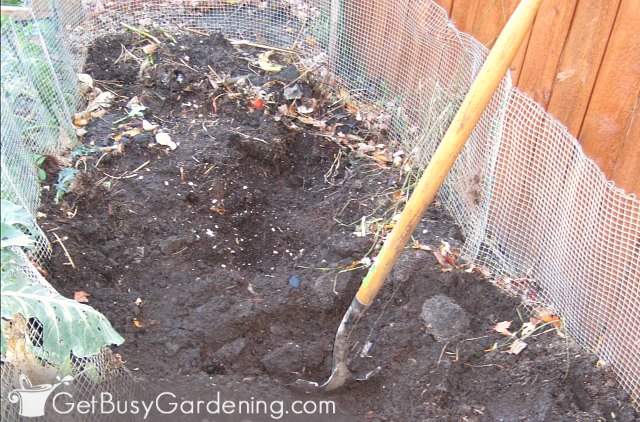
13. Exchange Seedlings With Friends
I don’t know about you, but I always end up with more seedlings than I have room for in my garden.
If you find yourself with extras, don’t just toss them out, swap them with your friends and neighbors to expand your collection for free.
14. Grow Organically
Using chemicals is expensive and totally unnecessary. Skip the costly, harmful pesticides, fertilizers, and herbicides, and grow organically instead.
Not only will it fit your tight budget, but your garden will be much healthier. You can easily make your own natural remedies and organic pest deterrents using supplies you already have, or from inexpensive ingredients.
15. Trade Plants
Everyone has plants that can be divided and traded for new ones. So if you want more variety in your garden this year, but don’t have a big budget, then get out your shovel.
Divide some of your existing perennials to trade for others. You could even organize a plant swap in your community or join dedicated groups online.
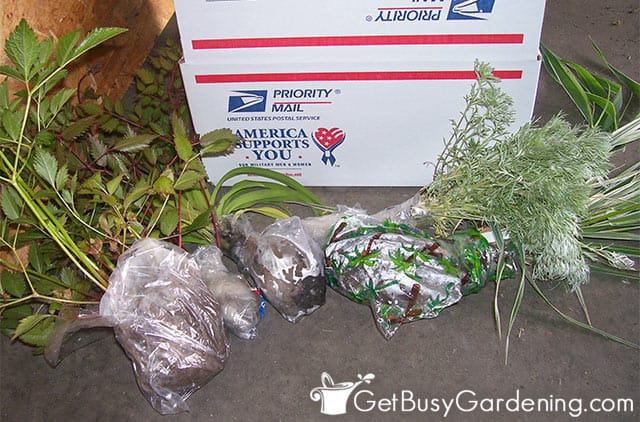
16. Overwinter Plants Indoors
It’s crazy how many of the annuals sold in stores are actually tender perennials that can live for many years in warmer climates.
Many types of tropicals, annual flowers, herbs, and even some veggies can easily be overwintered indoors. It’s totally worth the effort, and you won’t have to spend money buying new ones every spring.
17. Collect Rainwater
Not only will collecting rainwater save on your water bill, it’s also better for your plants, and good for the environment too.
Rainwater can be used in your outdoor beds or inside on your houseplants. In the winter, you can melt snow to water your indoor plants, which is just as good.
A rain barrel can be expensive, but you can save money by making your own. Many cities even have programs where they sell them at deep discounts to encourage residents to use recycled water.
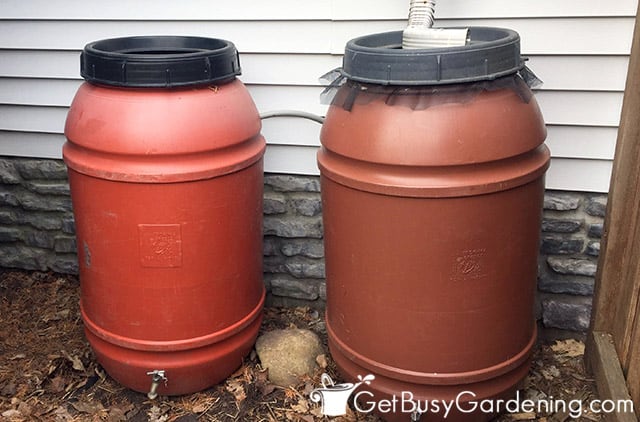
18. Choose Low Maintenance Plants
High maintenance plants are more expensive to buy than native ones or varieties that are common in your area. Plus, it also costs more money (and effort) to take care of them.
You’ll find that high maintenance varieties require more water, expensive soil amendments, fertilizer, and/or pest control.
Choosing ones that are hardy to your growing zone and climate instead will save you money in both the short and long term.
19. Saving & Using Leaves
Whether you’re on a budget or not, leaves are like gold to gardeners. They are an excellent mulch, add nutrients to the soil as they break down, and protect plants in winter. Best of all – they’re free!
So save the leaves from your yard, and gather them from your neighbors too. Then use them to cover your beds and top off the compost heap.
Gardening doesn’t have to be expensive, you can fit it into any budget. Give a few of these ideas a try, and you’ll see just how easy it is to save yourself some cash. Then you’ll soon be a pro at thinking of other ways you can make gardening even cheaper.
More About Budget Gardening
- How To Safely Buy Used Canning Supplies & Equipment
- A Cheap Alternative To Coconut Liners For Hanging Baskets & Planters
- A Cheap & Easy Propagation Box For Rooting Cuttings
Share your favorite ways to garden on a budget in the comments section below.
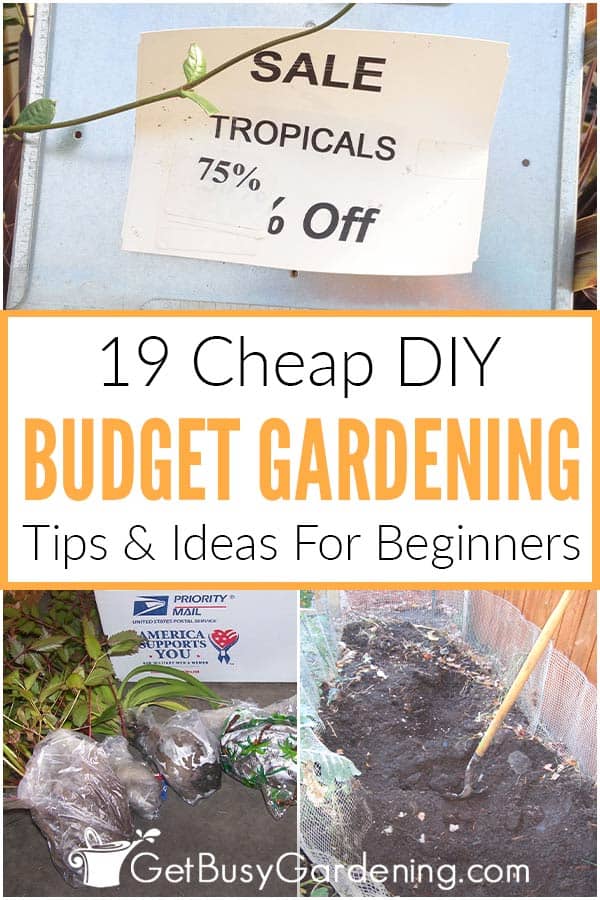
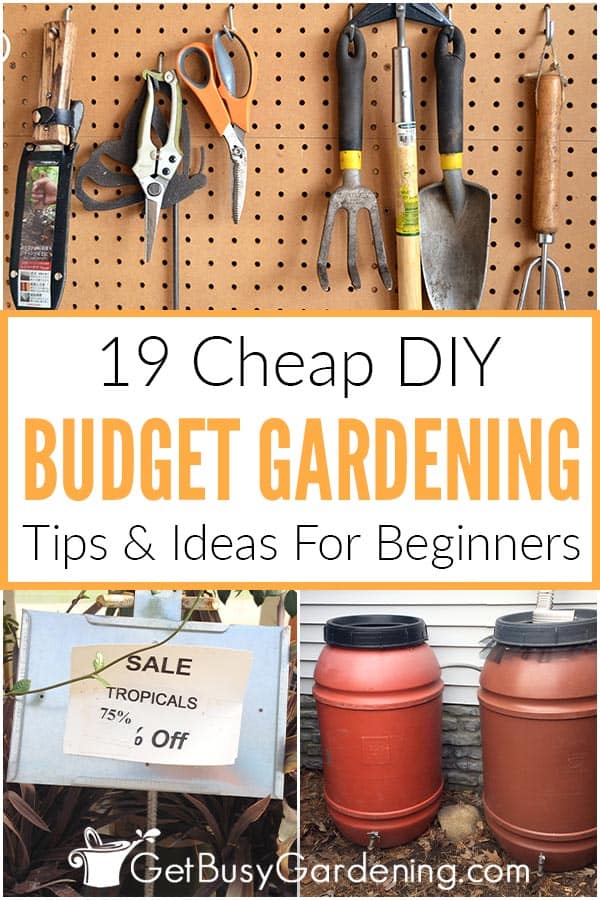



thara says
Great ideas. Yesterday I went to view a free allotment that was run by a community group near me. They had planned things in order to make it a lot easier.
Always look at alternative ways of finding things. Visit a garden centre to find many such cheap plants. Talk to the staff working there as well. Go to a local library to get free resourceful books and try to look at some different and helpful and cheap magazines on gardening and so on.
Attend flower shows. Make brief summary notes. Experiment. Much stuff can be found cheaply. Whenever I visit a garden I discuss or look at plants and flowers.
Amy Andrychowicz says
These are all great tips and ideas for budget-friendly gardening, thank you!
John says
Great list. Free plants from other gardeners are easy (and you can make new friends!), and propagating plants is easier than it sounds too, don’t be intimidated.
Amy Andrychowicz says
Yes, trading plants is such a great way to make new friends! I’m always leaving what I call “plant bombs” (aka divisions from my plants) at my neighbors houses. I like to surprise them… but they always know who it’s from. LOL